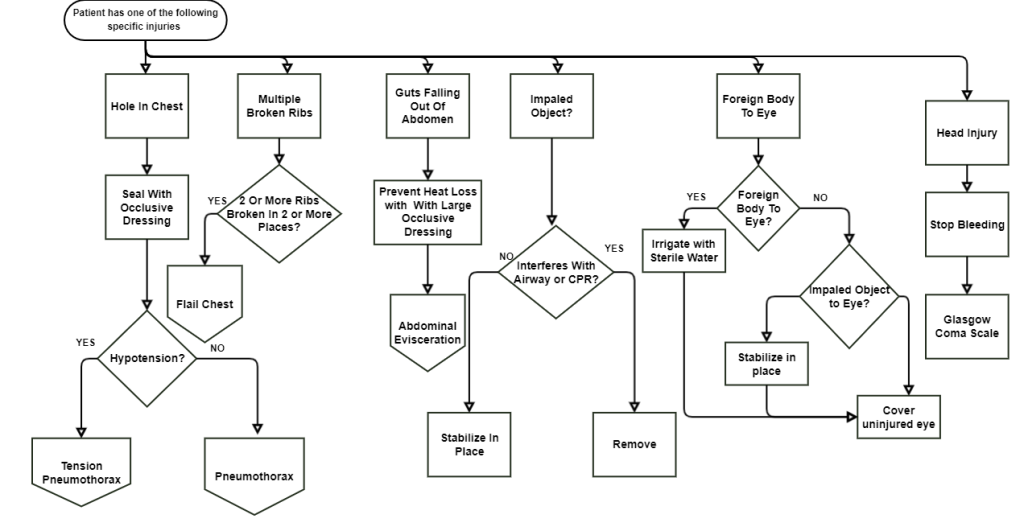Special Wound Care Dressings
Published .

Occlusive dressings
Occlusive or ‘non permeable dressings are used to seal up a wound. In the case of a pneumothorax, an occlusive dressing is used to prevent air from being sucked into the chest when the patient inhales. Bleeding to the neck should be sealed off with an occlusive dressing to prevent air from being sucked into a jugular vein when the patient inhales. Another use for an occlusive dressing is to seal off a wound to keep heat from escaping. An occlusive dressing is used to keep heat from escaping from an abdominal evisceration.
Non-Occlusive dressings
Non occlusive dressings are used to stop bleeding. A stack of 4 x 4 non sterile dry dressings and direct pressure is the medics first and best choice to stop bleeding. Non occlusive dressings come in all different shapes and sizes from very small 1″ x 1″ dressing to a larger multi trauma dressing.
Pressure dressings
Once bleeding has been controlled with direct pressure, the clot which has been formed from the medic’s direct pressure needs to be kept from moving. By wrapping the 4 x 4 gauze with conforming gauze, circumferential pressure is applied which secures the clot and keeps it from moving. The extremity with a pressure bandage can be splinted as a further attempt to keep the clot from moving .
Wet
Generally dressings used on the ambulance are dry, but some dressings are wet. When applying an occlusive dressing to an abdominal evisceration, the dressing should be wet with sterile water or saline to keep the abdominal wounds from sticking to the bandage.
Dry
Most dressings are dry, but in the case of burns always dry. Despite the temptation to wet a dressing applied to a burn, we dressings can make it even hard for a burn patient to thermoregulate. For this reason, burn patients are typically loosely covered with a dry sterile burn sheet.
Tourniquet
A tourniquet is used to stop bleeding by compressing the blood vessels to the point where blood flow stops. A tourniquet is intended for bleeding that can’t be controlled with direct pressure. Tourniquets are intended for extremities only. The tourniquet is placed 2 inches over the bleeding wound but not on a joint and tightened until the bleeding stops. If the tourniquet doesn’t stop bleeding, a second tourniquet can be applied 2 inches (but not on a joint) above the first.
Complications associated with dressings
All soft tissue injuries have the potential to result in swelling. Edematous wounds that have been wrapped with tape or too tightly with conforming gauze can cut off circulation. Failing to properly secure a dressing can result in unnecessary bleeding. Sometimes, devising a dressing for a particular wound can be difficult, in these situations, the medics can continue to manually apply pressure, cover, or stabilize a wound.
